Did you know that endless sitting in our office seat, by car or in our home chair, would accelerate our aging? Indeed, PresseSanté or SantéMagazine have highlighted this study of the American Journal of Epidemiology. We would be 8 years older! So what are we waiting for to get out of this endless sitting position and take a break, get up. And why not take the opportunity to stretch, or practice some yoga, experience some easy postures that relieve our shoulders and back?
Then, we’ve already felt those pains waking up when we sit for too long, haven’t we?
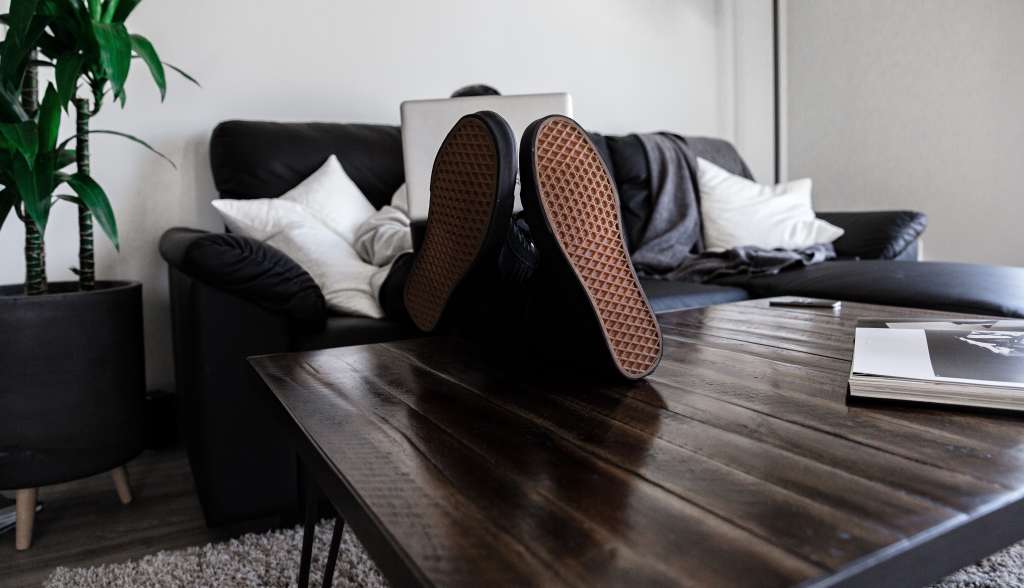
And even after following the ergonomic advice we have received in our workplace, for example: How to properly position your chair in relation to your desk, and your screen. What equipment to get to adapt to the best with our daily position, etc…
Still, despite all these efforts, the pains always succeed by taking over. What is more, we are trying to overcome them, to forget them. Sometimes we even start to ingest painkillers in order to surpass ourselves…
Although in this situation, it is simply our body that passes us the message “Eh! Are you sure you’re supposed to stay glued to that chair? I need you to function. Why not take a break and take the opportunity to stretch?”
And stress in addition to sitting?
Already, it is not healthy to sit for too long. But then when stress adds to the menu, hello damage!
We run out of time, so we hurry up to go faster. And if we can’t finish on time, then we get frustrated.
This kind of situation while sitting in your seat results in shoulders that go up to the ears, you have your head in the handlebars, but literally! The fingers that hit the keyboard or mouse, the forearms pushing the desk, the back lying forward, and the head raised to 90 degrees, the eyes fixed on the screen, which have not blinked for half an hour, and the breath blocked, in apnea! Ha we are beautiful, are we not! With, of course, a dress adapted to the conditions!

Result: “Uh… I don’t understand I was sitting all day, and still I have my back completely blocked…”
What are the Impacts? : Pain and more
Indeed, sitting too long, without taking a break, in addition to being stressed, makes us adopt positions that have a harmful impact on our body.
Fixed to the screen, our head moves very little. This pushes our cervical to support our large summit for long minutes / hours. Result: We can no longer turn our heads without moving our shoulders. Tired, our necks rest on our shoulders, which then go up to our ears. After the cervical and shoulders, it is the back that comes to support everything…
- The most impacted areas of prolonged sitting:
- The Neck, and cervical
- Shoulders
- Arms, forearms, hands
- Back, spine
- Pelvis, lumbar
The importance of breaks
Yet we know how useful breaks are to us. This has often been proven. We know that they allow us to recharge our batteries, to change our ideas. When we work without stopping, we get tired. And when we get tired, we wake up our toxic emotions. Stopping from time to time allows us to breathe and ventilate our brain, to take a step back to think better.
And we are very far from the activities of our ancestors, such as going in search of food, or even fleeing danger! Our ancestors lived shorter, but they remained very active. And our body has developed according to this way of life.
Today our body is in the same sitting position for too long. And it is so since our early childhood, especially at school or in our sofas to watch cartoons. But our body is not developed for this lifestyle.
A tip: Set your clocks and reminders
It is true that often we want to take a break but we miss it. We barely lift our heads that it is already noon.
My advice: Set your alarms or stopwatches to plan your breaks in advance. Block your e-calendar, save a reminder in your computer or in your phone. It is very rare for something to happen to us by chance. If we want it, most of the time we have to plan it.
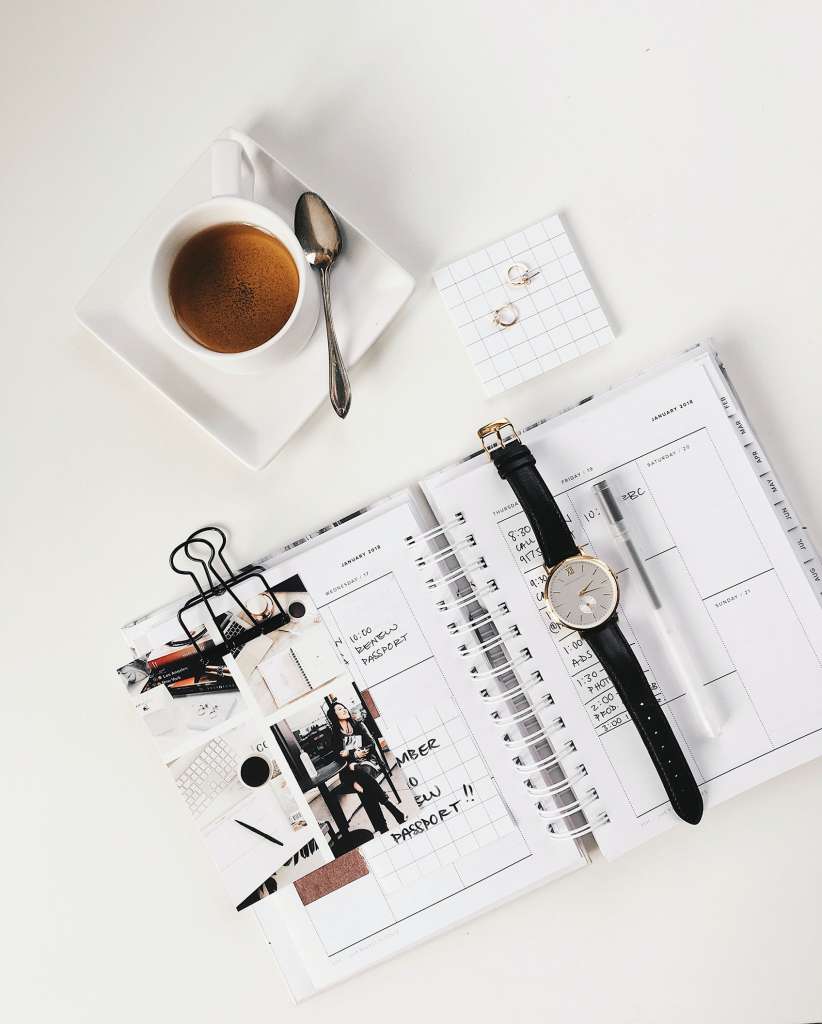
This trick happened to me while remembering my childhood, at my grandparents’ house. There were always those big, old clocks that had to be restarted manually. They rang every hour. They resonated so loudly that it vibrated throughout the whole house! I found them useful because they allowed us to raise our heads, disconnect for a few seconds from our activities. It was a very good alarm to remember to take a break and just avoid sitting too long. Of course, we’re not going to reinstall them everywhere, but we understand the idea…
What to do during breaks?
Yes I know, we do not want to do yoga especially because others will see us and we will feel ridiculous.
At least one positive point of the current epidemic is that most of us work from home. This is why we have fewer excuses for not including yoga in our breaks.
If you are at work: If you do not have a complex with the others watching you, you can make your movements in front of your colleagues. Which is a good way to influence your team to do the same. They will be able to see how much stretching can benefit them: Setting up a virtuous circle.
If you are rather uncomfortable, try to find a place isolated from the looks, not too far from your office to avoid as many constraints as possible and relax in peace. Or even, talk to your manager in order to allocate a quiet corner. It will be as beneficial for you, as it will be for your manager and your team.
It only takes very little material. A simple carpet does the trick or on the floor, if the type of floor of your company is soft enough. The main thing is not to feel pain when you are on your lap.
So that’s it! Ready? Here are 9 yoga postures (plus a final) that will make your break very effective.
Come on, I promise you, they are easy! In addition, the first four postures can even be performed sitting at your desk!
Above all, I repeat the primordial rule of yoga: I never force, I breathe! Pain is the limit. When it gets stuck, I open my mouth, and I exhale deeply. Breathing helps to release tensions, and to move forward in flexibility.
1- Opening of the shoulders, arms bent towards the back of the head, perpendicular to the body
- To start simple. Sitting, I go up with my arms in the air (Put your hands up, in the air, as if I were in the middle of a festival). Then I join the palms of my hands, and I bend my forearms to the back of my head.
- Advantage: This position will help open the rib cage and straighten the upper back.
- Time: In yoga, it is often the feeling that prevails. Or if not, we count in breath (=1 inspiration + 1 exhalation). We can count at least 3 deep breaths per position.
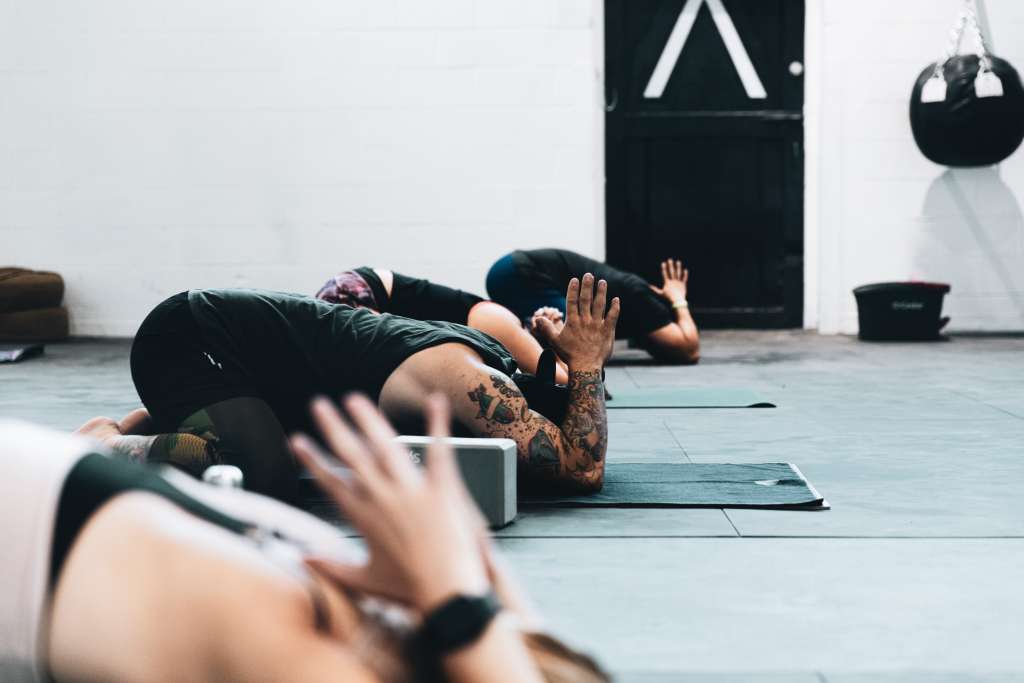
2- The arms of the eagle
- Still sitting, arms in front of me this time. I cross the elbows (no matter which elbow is above, it will have to alternate anyway then) and I try to touch the backs of the hands. If flexibility allows me, instead of the back of my hands, I touch the palms of both my hands.
- If possible, raise the elbows to the same level as the shoulders for more effective stretching. Keep shoulders low.
- Then repeat the same exercise by alternating the elbows (the elbow that was above passes below the other elbow).
- Advantage: Very good exercise to stretch trapezoids and intercostal muscles.
- Time: 3 deep breaths for each exercise.
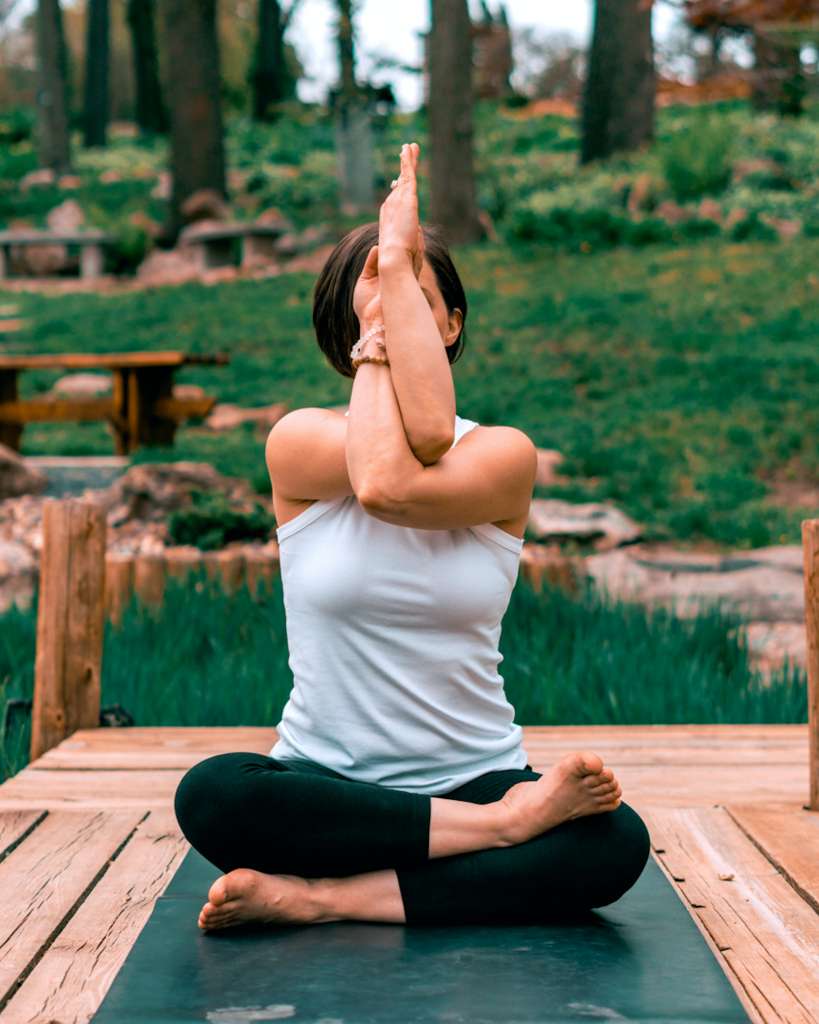
3- Stretching the arms behind the back
- This time, the arms are bent behind the back. My right hand will look for my left elbow. When my left elbow is well in my right hand, my right hand will pull that elbow to the right, along my back.
- If you can’t reach the elbow, you can simply hold your left forearm. For more effective stretching, you can also tilt your head to the right. Keep the shoulders low.
- For the more flexible, while stretching your left arm to the right, you can slide your hand along your back to between the two shoulder blades.
- Then repeat the same exercise by alternating elbows.
- Advantage: This position allows to stretch the outer side of the shoulder, which goes from the cervical to the triceps.
- Time: 3 deep breaths for each exercise.
4- Inverted palms in the back
- Always arms behind the back, stick the palms of both hands together. Start by touching the fingertips, then the whole fingers and palms.
- Advantage: Very good exercise that will straighten the upper back well and stretch the entire arm of the cervical, shoulders, arms, forearms up to the fingers.
- Time: 3 deep breaths.
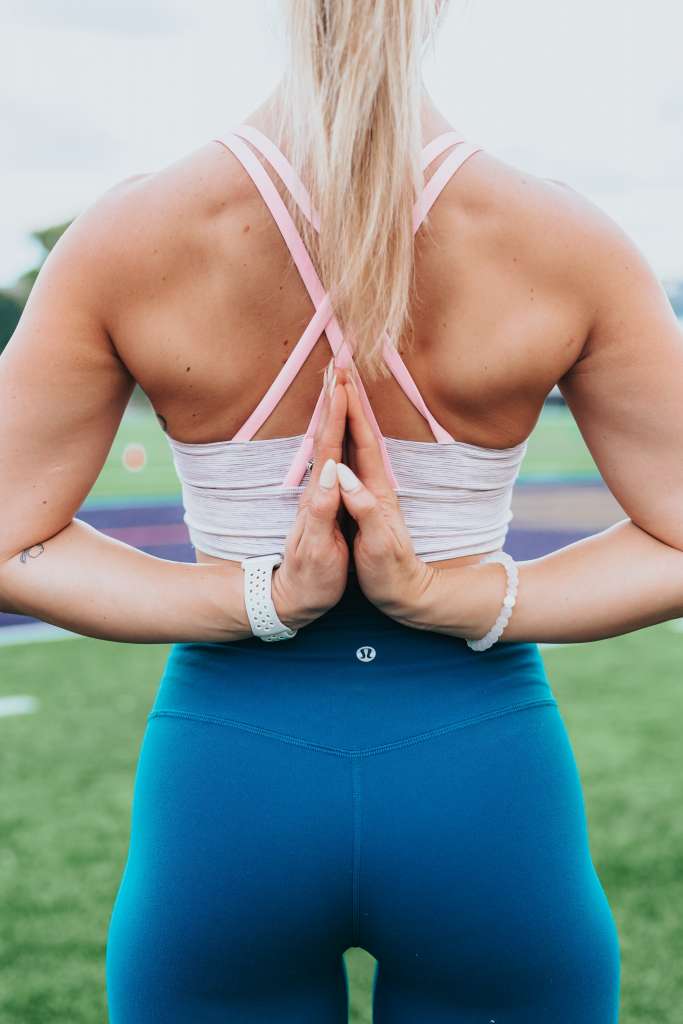
5- The child
- Then on a carpet, sitting on my lap.
- I lower my bust towards my knees and slide my arms on the carpet in front of me, in order to touch the ground with my head.
- Advantage: In the continuity of previous exercises, this posture will help to open the rib cage, stretch the large dorsal muscle and align the spine. It is a very simple posture, and at the same time very pleasant especially when we sit too long.
- Time: 3 deep breaths. Do not block the breathing, relax well, the muscles will relax by blowing deeply.

6- Following the child, fingers leaning on the mattress
- In the same position as the child, arms far ahead and outstretched; I press my fingers on the mattress and I perform movements only with the head up and down. I look ahead, then release my head to the floor.
- Repeat this movement 4 to 5 times or until the movement is easy to perform.
- Time: 4-5 deep breaths. Inhale by raising up the head, exhale through the mouth when going down.
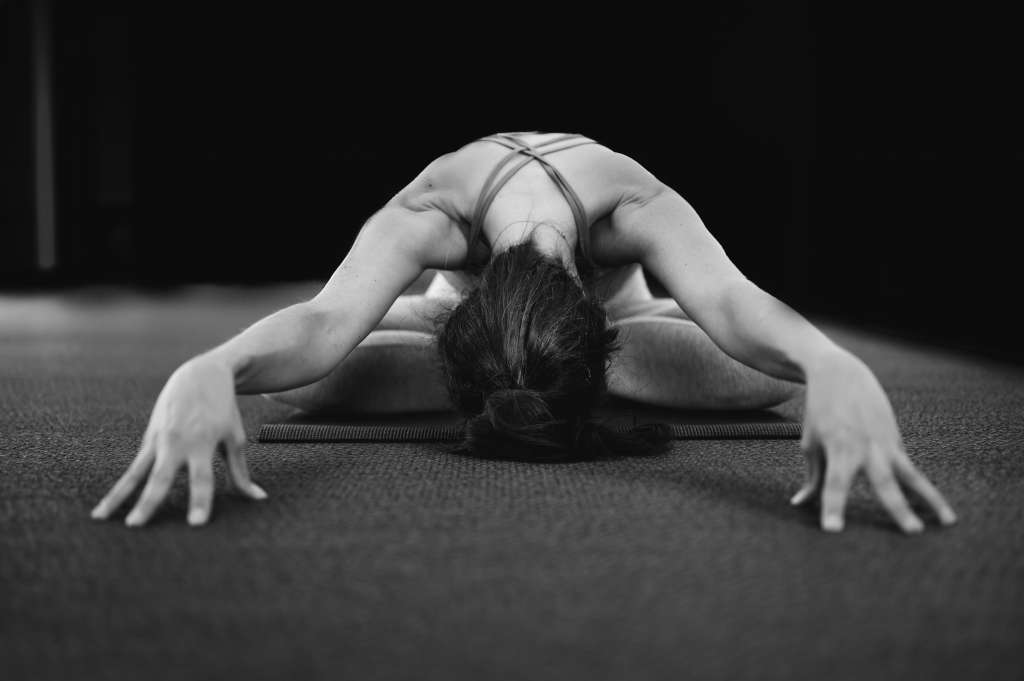
7- Children’s Suite, Opening of the Heart
- Always from the child’s position. Slide your arms further and climb your hips until they are at the same height as your knees. You can keep your forehead on the ground, or if you feel comfortable, raise your head and look ahead.
- Open your mouth and blow hard to help your body release tension.
- Advantage: Deepens the stretching of the shoulders and the opening of the rib cage.
- Time: 3 deep breaths. Do not block the breathing, relax well, the muscles will relax by blowing deeply.
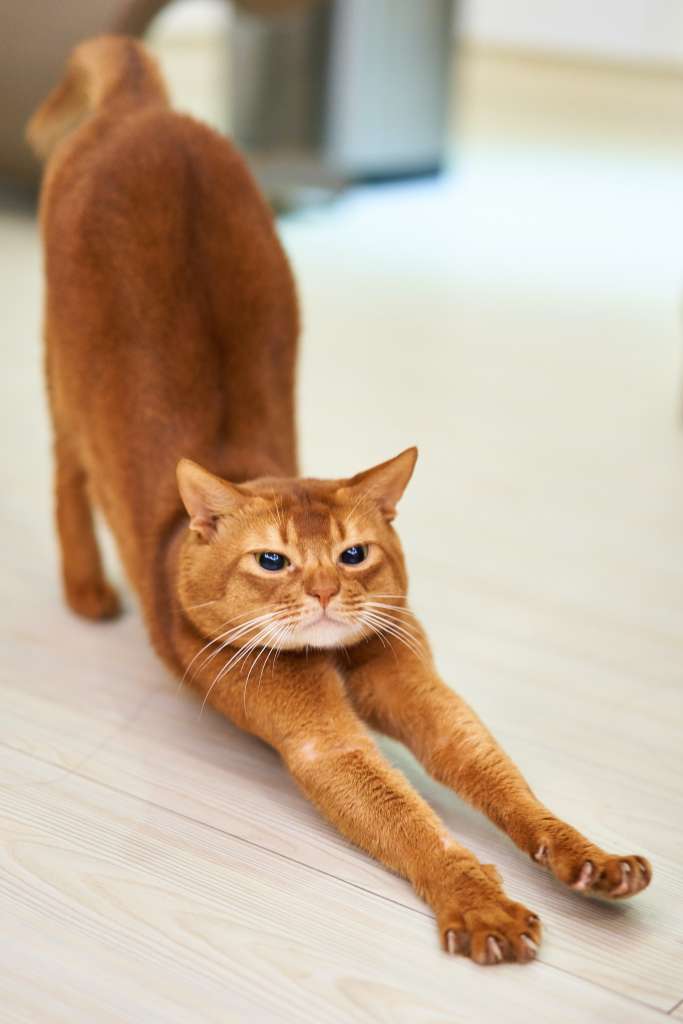
8- The Sphinx
- I lie completely on my stomach. I bend my arms and put my elbows on the ground. Then I raise my head and look to the sky. I keep the shoulders low and leave the lower back relaxed.
- Only the upper back works. It does not matter if the back does not come off the ground much. The main thing is to perform the movement.
- Advantage: Ideal to consolidate the upper back, reverse the cuckoo and strain the dorsal muscles.
- Time: 5 deep breaths.
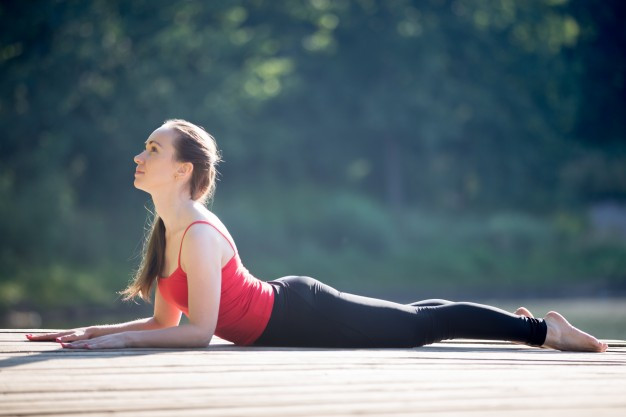
9- upward facing dog
- Following the position of the cobra, extend completely on the belly. This time, I bend my arms and put the palms of my hands on the ground. Pressing on the palms, I straighten my entire torso and head towards the sky, stretching out my arms. I stretch my legs and lift my hips off the ground.
- Time: 2 deep breaths.
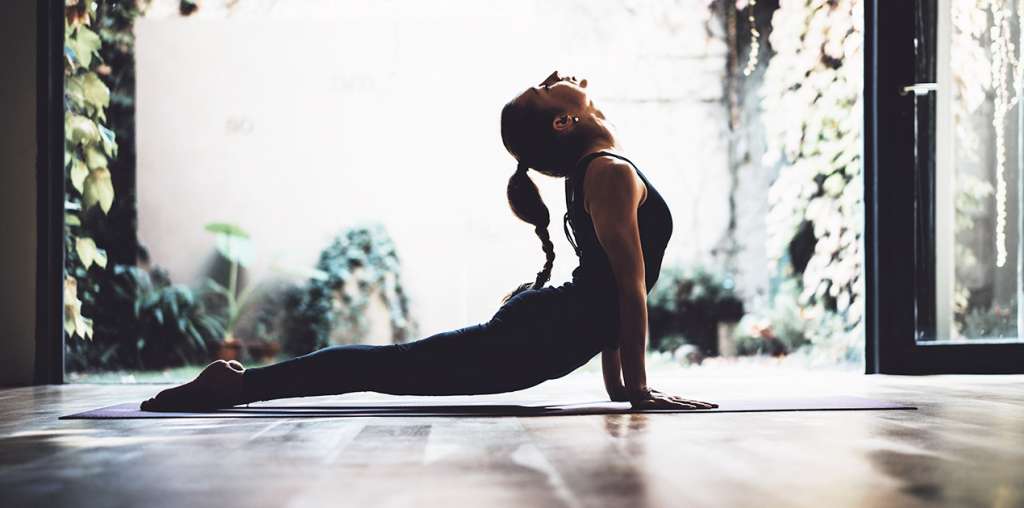
10- Downward facing dog
- Following the position of the dog heading up, go up the hips to form like a triangle with the ground and look towards the ankles. The knees can be bent. I pull my torso towards the ground in order to stretch my back, buttocks and legs.
- Advantage: It helps to stretch the whole body.
- Time: 2 deep breaths.
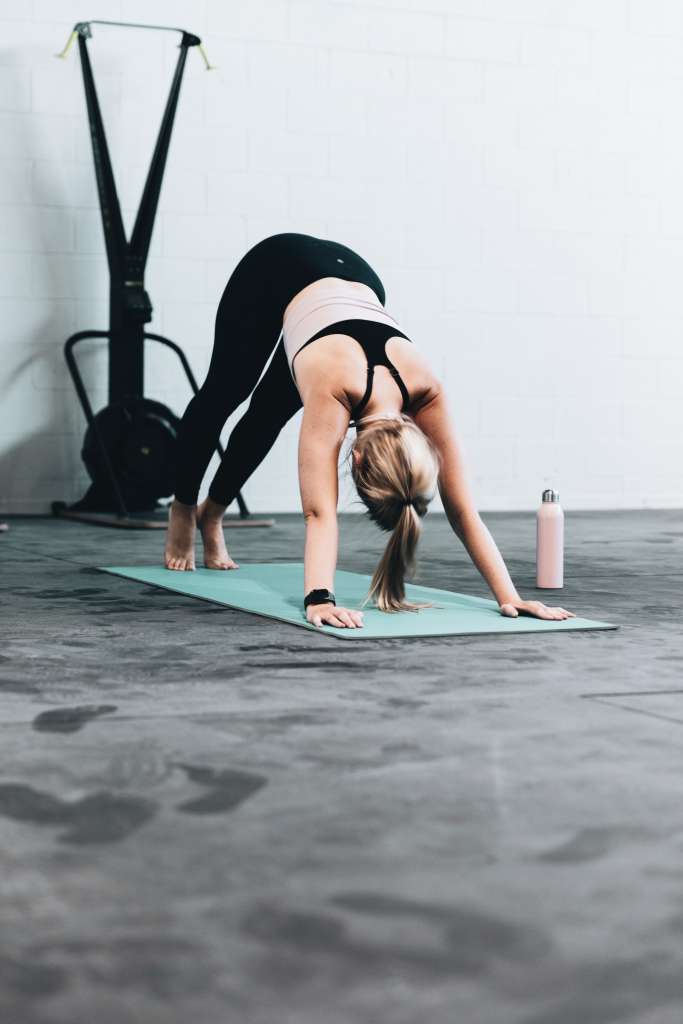
After the position of the downward facing dog, you can bring your feet closer to your hands by taking a few steps. Bend your knees, and unroll your back as you get up, your head at last.
Go slowly. You may get a little bit dizzy for a few seconds. It takes some time for the blood to flow back in the “normal direction.” Take your time.
That’s a great and productive break! Well done! ?
The ideal is to perform a yoga session at every break, or at least once a day to really feel an evolution towards more flexibility and make the constant pains disappear.
If you forgot to perform your exercises for a while, it does not matter. Precisely, since you have just thought about it again, this is an opportunity to get back to it.
Remember to schedule your breaks, set your clocks and reminders, and take advantage of your breaks to do some of the poses listed above.
Come on, because I know your days are busy; and it is with pleasure that I want to make your life easier. I have prepared a small list, containing the postures that we have reviewed together, below. You can print it and attach it to the wall in your productive pause corner.
Checklist
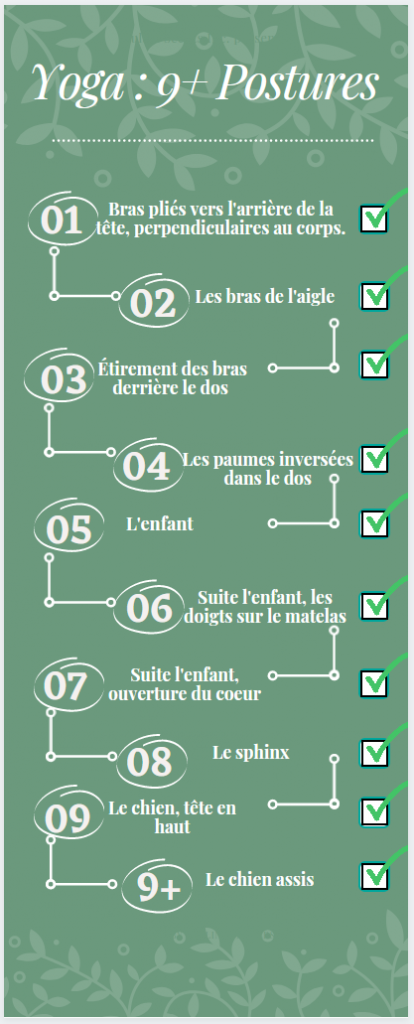
If you want to know more about yoga, do not hesitate to consult my article “What are the benefits of yoga?».
Also if you are interested in yoga, a multitude of videos are available on Youtube. Personally I am a fan of Juliana from Boho Beautiful. Most of her videos are available for free on Youtube. The videos are always superb, with marvelous landscapes. And there is something for all levels.
Otherwise I am always available. If necessary, contact me. ?



